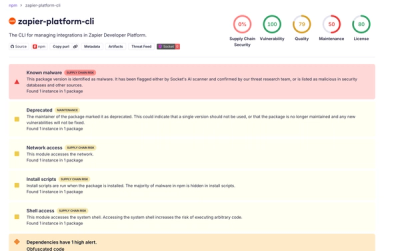



OSM Request
Request the OSM API (v0.6) from Javascript, with promises :)
Installation
npm install osm-request
Usage
The full documentation of osm-request API is detailed in the API documentation.
OSM Request use the same configurations properties as osm-auth 2.5.0. So you can define your options in a constante conf variable and use it both for osm-request and osm-auth.
Register your OAuth 2 application
- Open https://www.openstreetmap.org/oauth2/applications
- Click on
Register new application
- Choose a
name for your app, example: demo-app
- Choose a
Redirect URI
- For development, you can choose https://localhost and some port, it should be https.
- For production, you can choose the url of your app, it should be https.
- Choose the permission you need for your app.
- read_prefs is the minimum
- write_api is needed if your app can edit data
- Consider choosing more permissions if needed
- Read user preferences (read_prefs)
- Modify user preferences (write_prefs)
- Create diary entries, comments and make friends (write_diary)
- Modify the map (write_api)
- Read private GPS traces (read_gpx)
- Upload GPS traces (write_gpx)
- Modify notes (write_notes)
- Redact map data (write_redactions)
- Sign-in using OpenStreetMap (openid)
- Click on
Register
- Make sure to copy the
Client ID
- The
Client Secret is not needed, no need to copy it, also make sure not to disclose it
Note that OAuth 2.0 do no need the Client Secret to work. So it is safe to publish the Client ID of your app online. For example, you can create a browser/JavaScript app containing your Client ID and publish it online (on GitHub pages, etc).
Example with single page and auto login form
The bellow example only show how to use osm-request. But to work, it needs first that you connect the user of your app to OSM throught osm-auth. To connect your user, please read osm-auth readme
import OsmRequest from 'osm-request';
const conf = {
scope: 'read_prefs write_api',
client_id: "YOUR_CLIENT_ID",
redirect_uri: '',
url: 'https://www.openstreetmap.org',
apiUrl: 'https://api.openstreetmap.org',
auto: true,
singlepage: true
};
const osmRequest = new OsmRequest(conf);
async function start() {
let element = await osmRequest.fetchElement('node/3683625932');
element = osmRequest.setTag(element, 'key', 'value');
element = osmRequest.setTags(element, {
key1: 'value1',
key2: 'value2',
key3: 'value3',
});
element = osmRequest.removeTag(element, 'key2');
element = osmRequest.setTimestampToNow(element);
element = osmRequest.setCoordinates(element, 1.234, 0.456);
const changesetId = await osmRequest.createChangeset('Created by me', 'My changeset comment');
const isChangesetStillOpen = await osmRequest.isChangesetStillOpen(changesetId);
const newElementVersion = await osmRequest.sendElement(element, changesetId);
element = osmRequest.setVersion(element, newElementVersion);
}
start();
For the OSM dev instance, use that apiUrl: https://api06.dev.openstreetmap.org
Contribute
To start contribute on this project, you can retrieve code using the following commands:
git clone git@github.com:osmlab/osm-request.git
cd osm-request
npm install
npm run watch
This project uses a specific work flow for branches:
master branch is dedicated to releases, managed by repo maintainersdevelop branch is for currently developed version, managed by repo maintainersfeature/... branches are for all developers, working on a particular feature
Pull requests are welcome, as the project is fully open-source. If you want to work on new features, please create a branch named feature/yourFeatureName. When work is done, open a pull request to merge your branch on develop branch. The code will be reviewed by one or several developers before being merged, in order to keep a good code quality.
eslint version 8.X
For now eslint stays in version 8.X. We need to wait until babel, babel plugins and eslint plugins (that we use), are compatibles with version 9.X of eslint.
Make a release
git checkout develop
git pull origin develop
npm version patch -m "release: %s"
npm publish
git checkout master
git pull origin master
git merge develop
git push origin master
npm version tests the code, builds it and updates the doc. Then it upgrades the package version number according to the used keyword (patch, minor or major) and commits the modifications in Git (with a proper version tag). Finally, it pushes it to repository with the tag.
Apps or libs using osm-request





